|
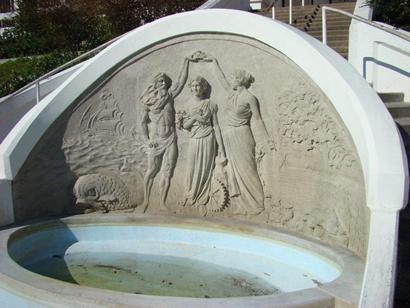
| "Queen of
the Sea" Fountain |
It
is hard to recognize this fountain for being a memorial to the Confederacy,
however, that is what it is.
Funding was provided by the Daughters of the Confederacy, Corpus Christi
Chapter with additional funds being donated from the two newspapers
that were published in Corpus
Christi at that time.
King Neptune and Mother Earth hold a crown above an allegorical female
(representing the city of Corpus
Christi), who carries a bouquet of flowers and the keys of success.
Nary a soldier is to be seen. A ship under full sail is carved behind
Neptune, while a plowman tills the soil behind Mother Earth.
The Texas
historical marker text tells the story of the bluff development
of which the fountain is a part. The work was restored in 1990 as
a project of the Corpus Christi Rotary Club. |
| "Queen of
the Sea" Fountain and historical markers |
| Broadway Bluff
Improvement Historical Marker |
Historical Marker
Text
Broadway Bluff
Improvement
This 40-foot bluff
became a distinctive border between uptown and downtown as Corpus
Christi experienced rapid growth after 1900. With the encouragement
of Mayor Roy Miller, New York engineer Alexander Potter began designing
improvements to the Bluff and parallel Broadway streets in 1913. Miller's
vision and Potter's plans reflected the "City Beautiful Movement"
then popular nationwide.
The next year voters approved a $15,000 bond issue and construction
began between Lawrence and Peoples Streets. The bluff was graded and
filled to a uniform division between upper and lower Broadway streets.
Massive concrete retaining walls were highlighted with elegant balustrades
and grand stairways.
The united daughters of the confederacy sculpture at Peoples Street
was designed by Pompeo
Coppini in 1914. A $150,000 bond issue in 1916 extended improvements
north to Mann Street, and property owners financed the south extension.
John G. Kenedy donated land at the south end in 1920, where World
War I memorials were placed in 1931. A pedestrian tunnel was finished
in 1929, connecting peoples and Schatzel Streets below with upper
broadway. Assistant city engineer Conrad Blucher supervised each phase
of the improvement project.
Recorded Texas Historic Landmark |
"Queen
of the Sea" by Pompeo Coppini
Monument Details
Photos courtesy
Ken
Rudine, 2010 |
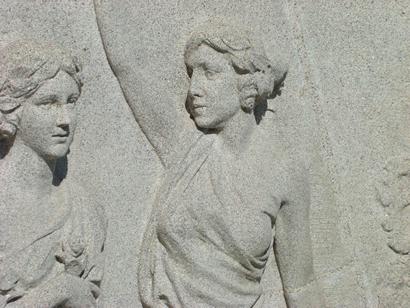 |
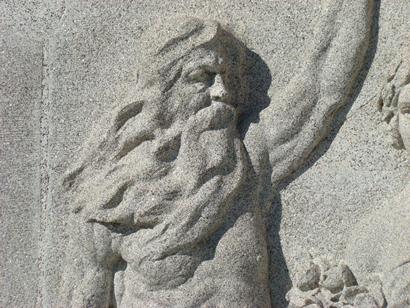 |
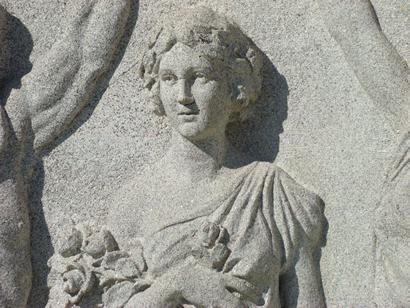 |
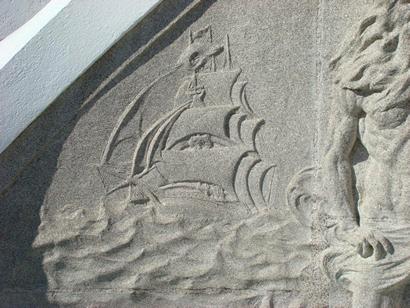 |
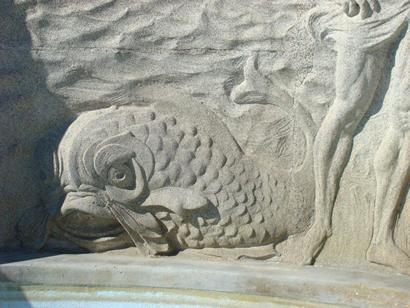 |
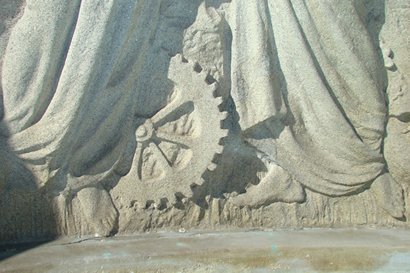 |
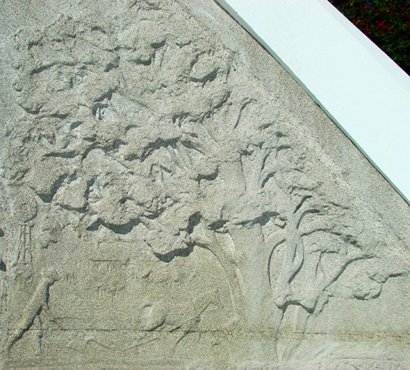 |
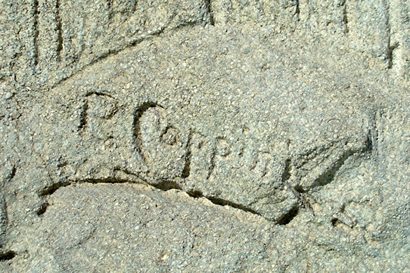 |
Historical Marker
Text
The Lone Star
Fair
Henry L. Kinney
(b. 1814), founder of Corpus
Christi, began by October 1851 to organize the Lone Star Fair
to boost local economy. The fair was publicized to attract new settlers
to the area, but was a thinly-veiled attempt to recruit men for the
army of Gen. Jose J.M. Carbajal, a Virginia-educated revolutionary
who was trying to liberate northern Mexico. Kinney called on Dr. Ashbel
Smith of Galveston,
Governor P.H. Bell, and ex-governors J.P. Henderson and G.T. Wood
to help promote the fair. Kinney advertised internationally and went
deeply into debt to build the facilities.
When the fair opened, May 1, 1852, main attractions included races
on a new racetrack, bullfights by the noted Mexico City Matador, Don
Camarena, the popular Maltby's Circus, a theatrical troupe from New
Orleans, philosophical oratory, stock and agricultural shows, and
exhibitions of horsemanship and wild bull riding, with prizes for
all competitive events.
Kinney planned for an attendance of 30,000, but only 2,000 visitors
appeared. The failure of the fair was attributed to the remoteness
of Corpus
Christi, poor transportation, and the revolutionary activity the
fair supported. The venture bankrupted Kinney and he soon departed
for Nicaragua to recoup his fortunes. |
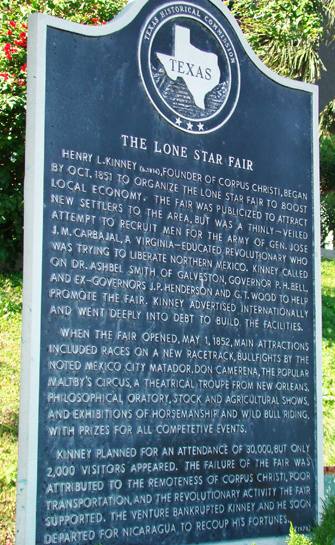 |
| The Lone Star
Fair Historical Marker |
|
|

